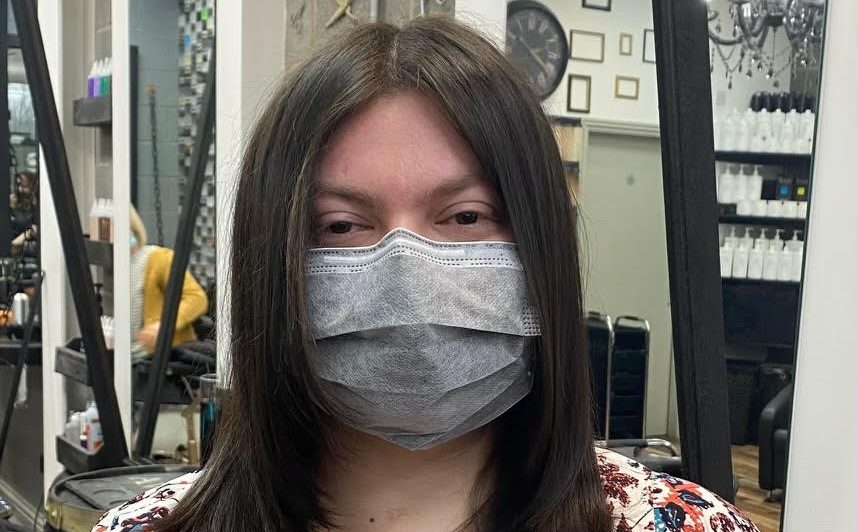
HOW PRINCE PHILIP HAD HEART ISSUE AND QUEEN MOTHER HAD CANCER
The good news about the King's cancer treatment today has been a welcome ray of light after months of speculation about the state of Charles' health and Kate's own diagnosis.
The Palace revealed today that the King has responded well to his medical regime following his cancer diagnosis in February.
The Princess of Wales is continuing her own treatment, which includes a regime of 'preventative' chemotherapy.
But the pair are by no means the first members of the Royal Family to face health battles.
The late Queen Mother was secretly twice treated for cancer - once in 1966 when she had a tumour removed from her colon and again in 1984 when the royal had a cancerous growth excised from her breast.
In the final decade of his life, Prince Philip had several stays in hospital, the last of which was to treat a pre-existing heart condition. He died in April 2021, just a few weeks after leaving hospital for the final time.
And Charles's early openness about his diagnosis is itself a sharp contrast from the final months of King George VI, who passed away 72 years ago after suffering from lung cancer.
The condition was kept secret from the King himself, who died five months after having part of his left lung removed.
Prince Philip
Prince Philip, who died aged 99 in April 2021, enjoyed remarkably good health until the final decade of his life.
He did a break a bone in his left ankle in 1961 after a collision on the polo field and in 1963 suffered a gash to his arm that needed stitches.
The Duke also fell from his pony in 1964, pulling a ligament in the process.
His first publicly reported surgery was to remove a cyst from his wrist in 1967, whilst in 1987 he was hospitalised to repair a hernia.
He also had a small benign growth removed in 1997.
It was at the age of 90 that the first serious health news emerged about Philip, when he was rushed to hospital in December 2011 after suffering from chest pains.
The Duke had surgery to treat a blocked coronary artery and spent four days in hospital.
In June 2012, Philip went back to hospital for six days after developing a urinary infection during the river pageant to mark the Queen's Diamond Jubilee.
The following year, he spent 11 days in hospital for abdominal surgery to treat an undisclosed condition. He spent his 92nd birthday in hospital.
In June 2017, the Duke of Edinburgh was back in hospital as a 'precautionary measure' for an infection arising from a pre-existing condition.
In April 2018, he spent nearly a fortnight in hospital following a successful hip replacement.
And in December 2019, Philip was again treated in hospital for his pre-existing but undisclosed condition.
His longest hospital stay, which began in February 2021, turned out to be his last.
Prince Philip underwent a procedure to treat a pre-existing heart condition and ultimately spent four weeks in hospital.
He was pictured waving to well-wishers when he left in-patient care but then passed away on April 9, just two months before his 100th birthday.
The Queen Mother
For much of her life, the Queen Mother remained remarkably robust.
But in the twilight years of her life before her death aged 101 in 2002, she did suffer from a series of ailments.
As well as persistent ulcers on her left legs, she suffered problems with her hips which made walking difficult.
This led to an initial hip replacement in 1995. In 1998, she had to have her other hip replaced after breaking it in a fall.
In the year 2000, she fractured her collar bone after tripping and falling at Clarence House .
And in July 2001 she was admitted to the King Edward VII Hospital and given a blood transfusion after being diagnosed with anaemia.
The health problems in her final years came after she was confined to her bed for a week in September 1942 while suffering from acute bronchitis.
In February 1964, the Queen Mother was admitted to hospital for an emergency operation to treat appendicitis.
In November 1982 the royal had another stay in hospital to remove a fish bone from her throat.
She spent a further three nights in hospital in May 1993 to remove a piece of salmon that was obstructing her throat.
The condition forced her to cancel a planned visit to Canada and a tour of New Zealand and Australia.
The Queen Mother also had her own private cancer battle. This was revealed in historian William Shawcross's 2009 biography of the royal.
He told how she had to have a tumour removed from her colon in 1966 and in 1984 had a cancerous growth removed from her breast.
Queen Elizabeth II
The late Queen generally had robust health throughout her life.
She was diagnosed with coronavirus in February 2022 and in the months before her death there was increasing concern about her mobility after she missed the State Opening of Parliament.
In October 2021 she spent a night in hospital for an undisclosed reason, after cancelling a planned visit to Northern Ireland.
Buckingham Palace said at the time that she was admitted for 'preliminary investigations'.
It was her first overnight stay in hospital in eight years. The previous time was an admission for gastroenteritis.
Author Giles Brandreth told in his book, which was released shortly after the Queen's death, that he had heard Her Late Majesty was suffering from a form of myeloma - bone marrow cancer.
He said this may have explained her tiredness and 'mobility issues' that the public were often told about.
However, esteemed royal writer Robert Hardman revealed in his recent book that the Queen slipped away peacefully from old age.
King George VI
Although King George VI was in largely good health for most of his reign, his heavy smoking ultimately took a toll.
In September 1951, he had his left lung removed for was referred to at the time as 'structural abnormalities'.
In reality, it was due to cancer, but the King's doctors kept this diagnosis both from the public and the monarch himself.
Although he did seem to be recovering from the procedure, the King died suddenly from a coronary thrombosis - or blood clot in the blood vessels or arteries of the heart - five months later, in February 1952.
Before he was treated for lung cancer the King also grappled with issues with his arteries which in 1949 nearly saw him lose his right leg when he developed an arterial blockage.
This led to the postponing of a planned tour of New Zealand and Australia.
George's death was a shock to the public and the Royal Family.
He had waved goodbye to his 25-year-old daughter and heiress, Elizabeth, just a few weeks before as she left to visit Kenya.
News of her father's death, and her immediate accession to the throne, reached the Queen while she was on safari.
Princess Margaret
Queen Elizabeth II's sister, Princess Margaret, suffered from poor health in her final years.
As a result of being a heavy smoker, she needed surgery in 1985 to have part of her left lung removed.
It emerged soon afterwards that no cancer had been found in the removed tissue.
That operation came five years after she was treated at the exclusive London Clinic to have a benign skin lesion removed.
In 1993, a bout of pneumonia left her hospitalised once again.
She also suffered from migraines, laryngitis, bronchitis and hepatitis in her final years.
And in 1999 she severely scalded her feet when she tried to get into a hot bath while on holiday on the Caribbean island of Mustique.
But it was a series of strokes that caused the most serious downturn in her health.
Her final one - suffered the day before she died - was her third.
Princess of Wales
On March 22, Kate revealed that, like the King, she was suffering from cancer.
In an unprecedented video message, she revealed the news had come as a 'huge shock' and that she and William 'have been doing everything we can to process and manage this privately for the sake of our young family'.
She went on: 'It has taken us time to explain everything to George, Charlotte and Louis in a way that is appropriate for them, and to reassure them that I am going to be ok.
'As I have said to them; I am well and getting stronger every day by focusing on the things that will help me heal; in my mind, body and spirits.
'Having William by my side is a great source of comfort and reassurance too. As is the love, support and kindness that has been shown by so many of you. It means so much to us both.'
The Princess of Wales' cancer was discovered only after she underwent major abdominal surgery at the The London Clinic in January.
She and King Charles were treated at the same time and spent time together at each other's bedsides.
Kate's current cancer fight and her initial surgery for an unspecified issue are believed to be the first major health issues she has faced.
She has a three-inch scar on the left side of her head from an operation that she had when she was a child.
It was first spotted in 2011 when the princess was conducting her first solo royal engagement at a black-tie private dinner at Clarence House.
In 2012 she was hospitalised for three days with severe morning sickness while pregnant with Prince George.
She was admitted to King Edward VII's Hospital — a private hospital in Marylebone that has been used by the Royal Family for more than a century.
Kate went on to suffer again from hyperemesis gravidarum (HG) while pregnant with Princess Charlotte in 2014 and Prince Louis in 2018.
King Charles
The King's cancer diagnosis is believed to be the first serious health condition of his life.
Prince Harry revealed in his memoir Spare that his father suffered from chronic neck and back pain, which he partly credited to old polo injuries.
He slipped a disc in the early 1990s and aggravated the injury two years later when he fell off a horse at Windsor.
His Majesty had to have a non-cancerous growth removed from his face in 2008 and was subsequently seen with a plaster on the right side of his nose.
In 1990, he broke his right arm after falling from his horse during a polo match. He had to spend three nights in hospital and ultimately needed an operation to fix it.
In January 1998 - the same year he needed keyhole surgery to repair damaged cartilage in his right knee - Charles had another fall from his horse and broke a rib.
He had been galloping across the Welsh countryside with the Wynnstay Hunt when he fell.
And, during a fox hunt in Derbyshire in January 2001, Charles's horse took an 'unexpected jump' and flung him to the ground.
He fell awkwardly and it was thought he had dislocated his shoulder.
A subsequent X-ray revealed he had, in fact, broken his acromion, a small bone on the edge of the shoulder blade.
Charles had yet another fall from his horse in August 2001 following a goalmouth skirmish during a charity polo match at Cirencester Park in Gloucestershire .
The head-first fall knocked him unconscious and he was in danger of swallowing his tongue until a paramedic rushed onto the pitch.
Charles was carried off on a stretcher and some of the horrified crowd, which included supermodel Claudia Schiffer, later admitted they thought he was dead.
In November 2001 Charles reported for royal duties sporting a rather alarming bandage over his left eye.
It transpired the Royal had been sawing a branch off a tree at Highgrove, his Gloucestershire estate, when he managed to get sawdust in his eye.
The dust scratched his cornea and temporarily affected his vision. After treatment from a local doctor, he was transferred to a specialist and prescribed a day's rest.
Charles had an operation on a hernia in March 2003, which was reportedly caused by a gardening injury from working in the grounds at Highgrove.
The condition, caused by part of the intestines protruding through an abdominal muscle, left Charles in considerable pain — and the subsequent operation meant he had to cancel his annual skiing holiday in Klosters, Switzerland.
Speaking to BBC Radio 4's Today programme on Tuesday, former royal press secretary Simon Lewis said that Charles' openness about his cancer diagnosis has been his 'style' as a monarch.
'I think it's actually been the style of the King's first year,' he said.
'This is obviously one element of it. But if you think of the book and the access that was given to Robert Hardman, if you think of the documentary, if you think of his whole style as King, I think this is very much in keeping with that.
'And I do think his advisors, with this statement I'm sure we'll talk about it, have actually got it spot on.
'I think 20 years ago we would have got a very abrupt, short, statement, and that's about it. And I think they've gone as far as they possibly can given that the King has had a diagnosis of cancer and, as a lot of people know, processing that is a pretty tough process.'
Mr Lewis said it was 'not so much the crisis itself, it's how you handle the crisis' that defines it.
'In this case, what could have been a crisis, has now been put firmly in context.
'I think he can go about his working life in the knowledge that people have an understanding that he's having this treatment as well.
'As I say, so many people around the country are having this kind of treatment. There are so many people who want to continue their working lives whilst being treated for cancer.
'I think it's a very, very positive message.'
Daily Mail royal correspondent Robert Hardman told the Today programme there was a 'great significance' to the King being so transparent about his health.
'I think where we are now is, we'll say so much, but it's all about precedent,' he said.
'If you set a precedent of giving away all the details, all of the time, immediately, for any patient that can be troubling.
'I think they are going to want to let information out as and when it feels appropriate.
'There's a sense that we've been open enough thus far, if you need to know more you will.
'That's where we're standing for now. We want to hold something back, because everybody does.'
Read more 2024-04-26T17:23:02Z dg43tfdfdgfd











